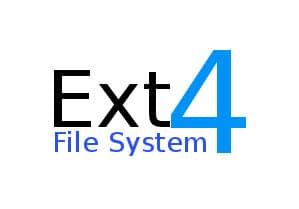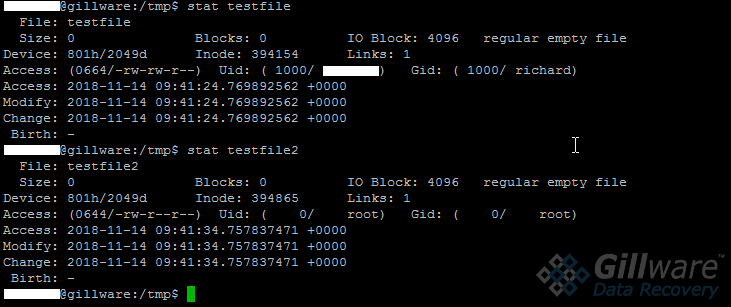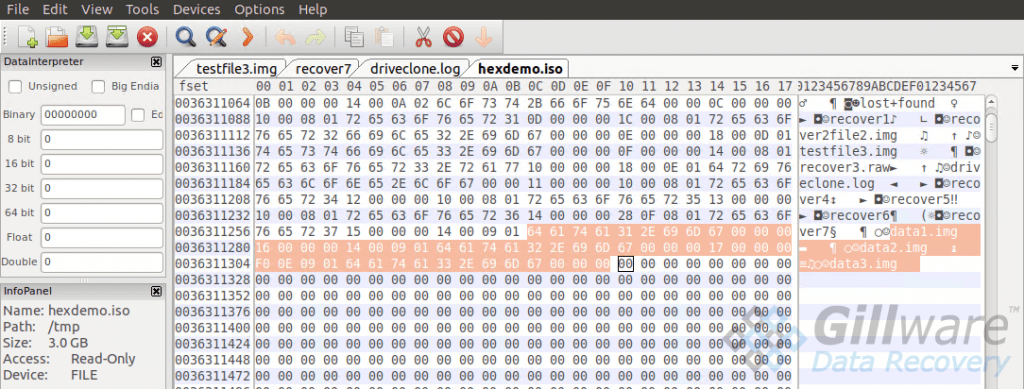How To Repair Ext4 Filesystem
Whether you're dealing with accidentally-deleted files, deleted or corrupted LUNs, or bug with an unresponsive NAS server or virtual auto setup, it can be a challenge to recover data on an Ext4 file system, even when there are plenty of information recovery tools at your disposal.
If you are not confident in recovering your information on your own, or if your attempts at doing so are unsuccessful, you should contact our data recovery specialists for help:
What is the Ext4 file system?

There are over 100 different types of file systems available for disk storage on the Linux operating organization. The fourth extended file system, or Ext4 as its more than commonly known, is 1 of the most popular choices and the default file system standard incorporated into all the major Linux distributions.
Recovering data from an Ext4 partition can exist difficult. This is due to the style the operating system breaks upwardly the data on an Ext4 file organisation using "blocks" and "cake groups."
A block is a group of sectors betwixt 1KiB (1024 kb) and 64KiB (65536 kb) in size. Ext4 is efficient and structures information blocks into a serial of block groups to boost performance. Block groups comprise different types of blocks which assist the file arrangement in structuring the data, including an Ext4 superblock, group descriptors, inode tables, inode bitmaps, and the actual data blocks.
How is the Ext4 file organisation designed to protect information?
Ext4 is a flexible, durable and backward-compatible file system (with Ext2 and Ext3) which supports a number of OS features and extended attributes aimed at providing scalability and reliability for large file systems.
Out of the box, Linux distributors propose that it is not possible to recover information from an Ext4 file arrangement. However, culling methods tin can potentially restore your information to its original source. Several tools be that attempt to recover data by grepping the file system periodical or undeleting lost inodes (to varying degrees of success).
However, in severe situations, off-the-shelf or free data recovery tools might not be able to help you when you demand file recovery from an Ext4 file system.
These include:
Inode Tables
An inode table is a fundamental building cake of the file arrangement. Information technology contains metadata about a file or block of data on an Ext4 file system. An awarding tin recall the unique metadata by calling the known inode ID. Each inode represents a file from the file table. This file system approach improves performance and reduces fragmentation on the server.

Inodes contain pertinent information such every bit:
- File creation (nativity) timestamp (btime)
- Last modification timestamp (mtime)
- Last status modify timestamp (ctime)
- Size of file
- Device ID
- User ID (UID)
- Grouping ID (GID)
- And a pointer to the information
Inodes exercise not store the file name; that data lies in the file tabular array. Each file proper name corresponds to only one single inode number. All the same, one file inode number may have many names that map to it. Querying Inode data is very simple on whatever Ext4 file arrangement.
Journaling
Journaling is a characteristic of Ext4 designed to prevent information corruption. Essentially, a journaling log tracks write operations to the disk and ensures that any partially written jobs are completed next. The file system uses the journal if in that location is an unexpected reboot and data has not finished writing to disk to preclude abuse.
Journaling is a boon to data recovery tools and specialists. The log which tracks changes to the disk and to the file system metadata can exist used to roll dorsum destructive changes such as accidental or malicious deletion.
What Makes It Challenging to Recover Information from an Ext4 File System?

The to a higher place concepts are important to sympathise when looking into data recovery on an Ext4 partition. Data can be lost due to the following, regardless of the reliability of any associated hardware:
- Hardware issues
- Software bug
- User error
Information most frequently ends up deleted by user error or by malice. If your server does non take an up-to-date backup, and so it may not always exist possible to gyre dorsum and restore your critical data.
Here are just a few of the kinds of Ext4 information loss situations you might run into where your best option is to telephone call upon Gillware's professional data recovery services:
Ext4 Deleted or Inaccessible LUNs
When you use a network attached storage device, or NAS device, the underlying file arrangement used past the device will frequently be Ext4 or another open-source Linux file organisation. NAS devices, especially those intended for use by many people in an organization, will often exist partitioned into iSCSI targets identified by unique logical unit numbers, or LUNs.
A single LUN is, more or less, ane behemothic file that acts as a container for other files. Considering of its size, recovering data from a deleted LUN can evidence peculiarly challenging. In most file systems (and Ext4 is no exception), the larger a file is, the less probable information technology is to be face-to-face (i.e. all of its pieces located next to each other). Instead, these files are scattered in many tiny pieces all across the NAS device's disks.
Ext4 can be highly destructive to deleted data. While it won't erase deleted files automatically, it does immediately scrub the metadata regarding the file blocks' locations. This makes all those individual pieces hard to dig upwardly and piece dorsum together. When it comes to iSCSI targets, there are a lot of those pieces to collect.
Recovering deleted LUNs is piece of work best left to professional information recovery experts with cutting-border tools. Acquire more most how nosotros handle this state of affairs past reading our Ext4 deleted LUN example study.
Deleted VMDK or Corrupted Virtual Machines
Ext4 and other Linux file systems commonly see use as platforms for hypervisors like VMWare Workstation or VirtualBox. Virtual hard disks and virtual machines function in much the same way as iSCSI targets and LUNs. They are all forms of "soft partitions," files which act similar hard disk drive partitions and contain information within them. When virtual machines get corrupted or are accidentally deleted, recovering information from them is often best left to data recovery specialists who understand the intricacies of virtual environments.
Hd Failure
Whether your Ext4 device is a unmarried hd drive in your PC or a NAS device used for external information storage, hardware failure is rarely something you can set up on your ain. When a hd starts clicking or beeping, fails to spin up when you run power to it, or detects with the wrong capacity, there is about always something incorrect with it that tin only be stock-still in a professional information recovery lab with an ISO-v standard clean surround.
These are the situations where you lot'll want to have Gillware on your side. Nosotros've been salvaging information from cleaved hard disk drives, servers, and everything else with industry-leading success rates since 2003.
We take but scratched the surface when it comes to how nosotros recover information on an Ext4 file system. Obviously, every recovery scenario is unlike. Ane must consider factors such as:
- The amount of data you are trying to restore
- Whether the information is encrypted
- Whether you have a hardware fault such as a failed RAID controller
- And other situations that complicate the data recovery procedure
If you lot're struggling to recover data on an Ext4 file system and have any questions about how we can help, feel gratis to reach out to our data recovery advisors.
Source: https://www.gillware.com/data-recovery-services/recover-data-on-an-ext4-file-system-2/

0 Response to "How To Repair Ext4 Filesystem"
Post a Comment